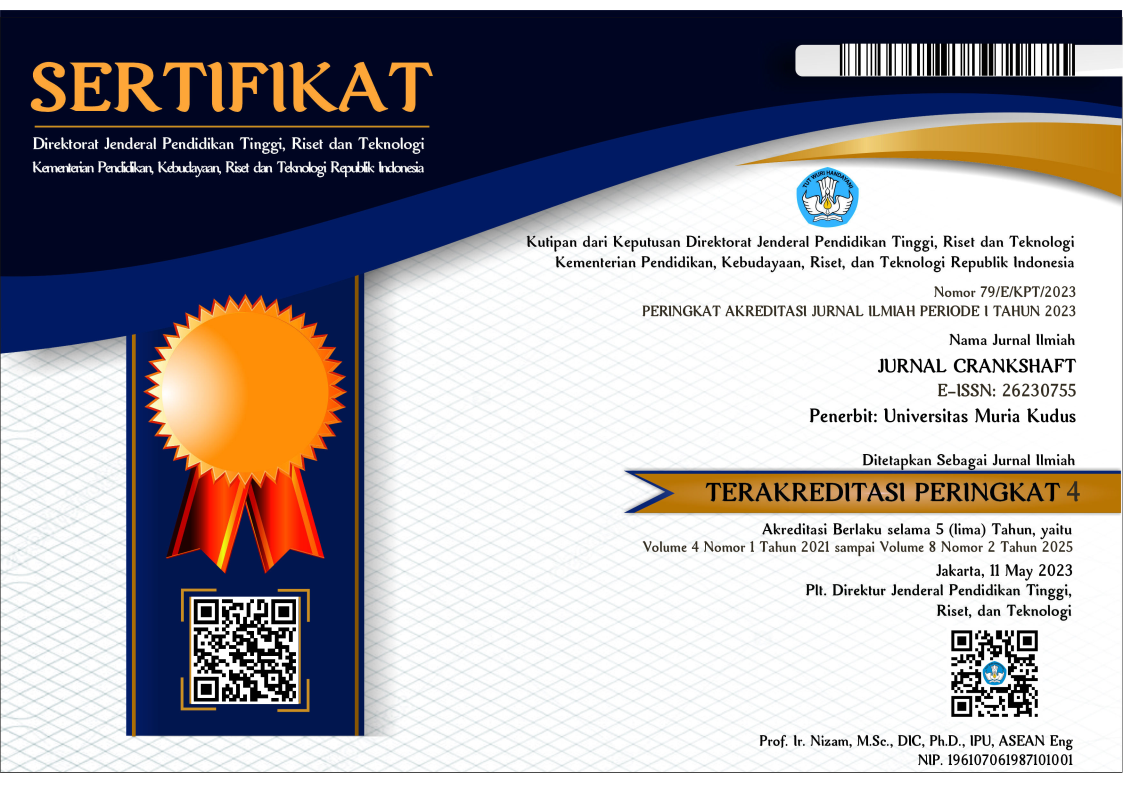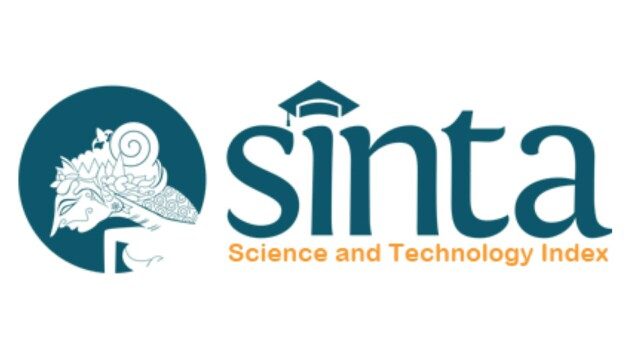Studi Sifat Optik Nanomaterial SiO2 dengan Spektroslopi UV-Vis
Sari
Daya serap gelombang terhadap setiap nano material mempunyai nilai yang berbeda-beda. Hal ini dipengaruhi oleh beberapa factor mulai dari struktur mikro, gugus fungsi dan jenis perlakuan yang diberikan kepada nano material tersebut. Salah satu material yang memiliki potensi untuk menyerap gelombang dengan baik adalah SiO2 yang sudah mendapatkan perlakuan panas. Material tersebut di proses menggunakan High Energy Milling (HEM) untuk mencapai ukuran nano. Dalam prosesnya material yang akan direkayasa ukuranya dimasukkan kedalam tabung yang berputar dan menghasilkan gaya sentrifugal. Rekaya Nanomaterial saat ini berkembang dengan pesat dan berkembang kedalam banyak bidang seperti bidang rekayasa struktrur, kesehatan dan energy. Dibidang energi, nanomaterial sangat berperan penting karena mempunyai energi lebih besar dari pada material ukuran biasa karena memiliki surface area yang besar. Energy band secara bertahap berubah terhadap orbital molekul. Umumnya Resistivitas elektrik mengalami kenaikan dengan berkurangnya ukuran partikel untuk melihat pengaruh karakteristik nanomaterial terhada daya serap energy dapat dilakukan dengan menggunakan uji UV-Vis. Spektroskopi UV-Visible (UV-Vis) mengukur penyebaran dan penyerapan cahaya yang melewati sampel. Nanopartikel memiliki sifat optik unik yang sensitif terhadap ukuran, bentuk, konsentrasi, keadaan aglomerasi, dan indeks bias di dekat permukaan nanopartikel, yang menjadikan UV-Vis alat yang berharga untuk mengidentifikasi, mengkarakterisasi, dan mempelajari material nano.
Teks Lengkap:
PDFReferensi
P. M. Ajayan, L. S. Schadler, and P. V Braun, “Nanocomposite Science and Technology,” Materials Today, vol. 6, no. 11, p. 52, 2003, doi: 10.1016/s1369-7021(03)01139-8. [2] S. Mkata, “Uv vis spectroscopy practical.,” Physikalisch-chemisches Praktikum I, pp. 1–11, 2017, [Online]. Available: https://www.coursehero.com/file/76918963/UVVis-HS17pdf/ [3] C. S. S. R. Kumar, UV-VIS and photoluminescence spectroscopy for nanomaterials characterization. 2013. doi: 10.1007/978-3-642-27594-4. [4] H. P. Moeur, A. Zanella, and T. Poon, “An introduction to UV-vis spectroscopy using sunscreens,” J Chem Educ, vol. 83, no. 5, p. 769, 2006, doi: 10.1021/ed083p769. [5] T. Jovanovi, “Determination of New IR and UV / VIS Spectroscopic Assessment , Identification and Possible Applications,” 2021. [6] K. P. Katin, A. I. Kochaev, S. Kaya, F. El-Hajjaji, and M. M. Maslov, “Ab Initio Insight into the Interaction of Metal-Decorated Fluorinated Carbon Fullerenes with Anti-COVID Drugs,” Int J Mol Sci, vol. 23, no. 4, 2022, doi: 10.3390/ijms23042345. [7] L. C. Chen, C. H. Hsu, P. S. Chan, X. Zhang, and C. J. Huang, “Improving the performance of dye-sensitized solar cells with TiO2/graphene/TiO2 sandwich structure,” Nanoscale Res Lett, vol. 9, no. 1, pp. 1–7, 2014, doi: 10.1186/1556-276X-9-380. [8] T. E. Saraswati, U. H. Setiawan, M. R. Ihsan, I. Isnaeni, and Y. Herbani, “The Study of the Optical Properties of C60 Fullerene in Different Organic Solvents,” Open Chem, vol. 17, no. 1, pp. 1198–1212, 2019, doi: 10.1515/chem-2019-0117. [9] A. Ray, K. Santhosh, and S. Bhattacharya, “Absorption spectrophotometric, fluorescence, transient absorption and quantum chemical investigations on fullerene/phthalocyanine supramolecular complexes,” Spectrochim Acta A Mol Biomol Spectrosc, vol. 78, no. 5, pp. 1364–1375, 2011, doi: 10.1016/j.saa.2011.01.011. [10] M. H. Binsabt, H. M. Al-Matar, A. L. Balch, and M. A. Shalaby, “Synthesis and Electrochemistry of Novel Dumbbell-Shaped Bis-pyrazolino[60]fullerene Derivatives Formed Using Microwave Radiation,” ACS Omega, vol. 6, no. 31, pp. 20321–20330, 2021, doi: 10.1021/acsomega.1c02245. [11] A. R. A. Scharnberg, A. C. de Loreto, and A. K. Alves, “Optical and structural characterization of Bi2fexNbO7 nanoparticles for environmental applications,” Emerging Science Journal, vol. 4, no. 1, pp. 11–17, 2020, doi: 10.28991/esj-2020-01205. [12] R. Begum et al., “Applications of UV/Vis Spectroscopy in Characterization and Catalytic Activity of Noble Metal Nanoparticles Fabricated in Responsive Polymer Microgels: A Review,” Crit Rev Anal Chem, vol. 48, no. 6, pp. 503–516, 2018, doi: 10.1080/10408347.2018.1451299. [13] M. Alim-Al-Razy, G. M. A. Bayazid, R. U. Rahman, R. Bosu, and S. S. Shamma, “Silver nanoparticle synthesis, UV-Vis spectroscopy to find particle size and measure resistance of colloidal solution,” J Phys Conf Ser, vol. 1706, no. 1, 2020, doi: 10.1088/1742-6596/1706/1/012020. [14] P. Bermejo-barrera, M. Aboal-somoza, and M. Fondo, “Semiconductor Quantum Dots as Target Analytes : Properties , Surface Chemistry and Detection,” pp. 1–35, 2022. [15] S. Prof and P. Rauwel, “Institute of Technology ABSORPTION SPECTROSCOPY STUDIES OF SILICON DIOXIDE NANOPARTICLES AND THEIR APPLICATIONS IN SOLAR NENDE RAKENDUS PÄIKESEPANEELIDES Bakalaureusetöö Tehnika ja tehnoloogia õppekava Tartu 2021,” 2021.
DOI: https://doi.org/10.24176/cra.v8i1.14462
Refbacks
- Saat ini tidak ada refbacks.
##submission.license.cc.by-nc-sa4.footer##
Indexed by:
Jurnal Crankshaft is licensed under a Creative Commons Attribution-ShareAlike 4.0 International License.
Dedicated to:








